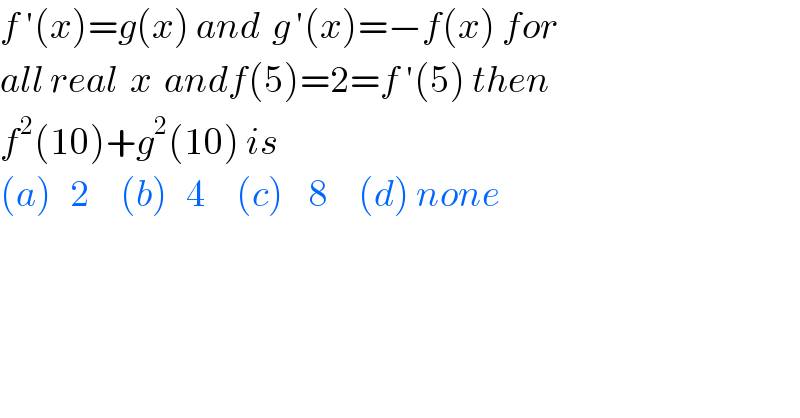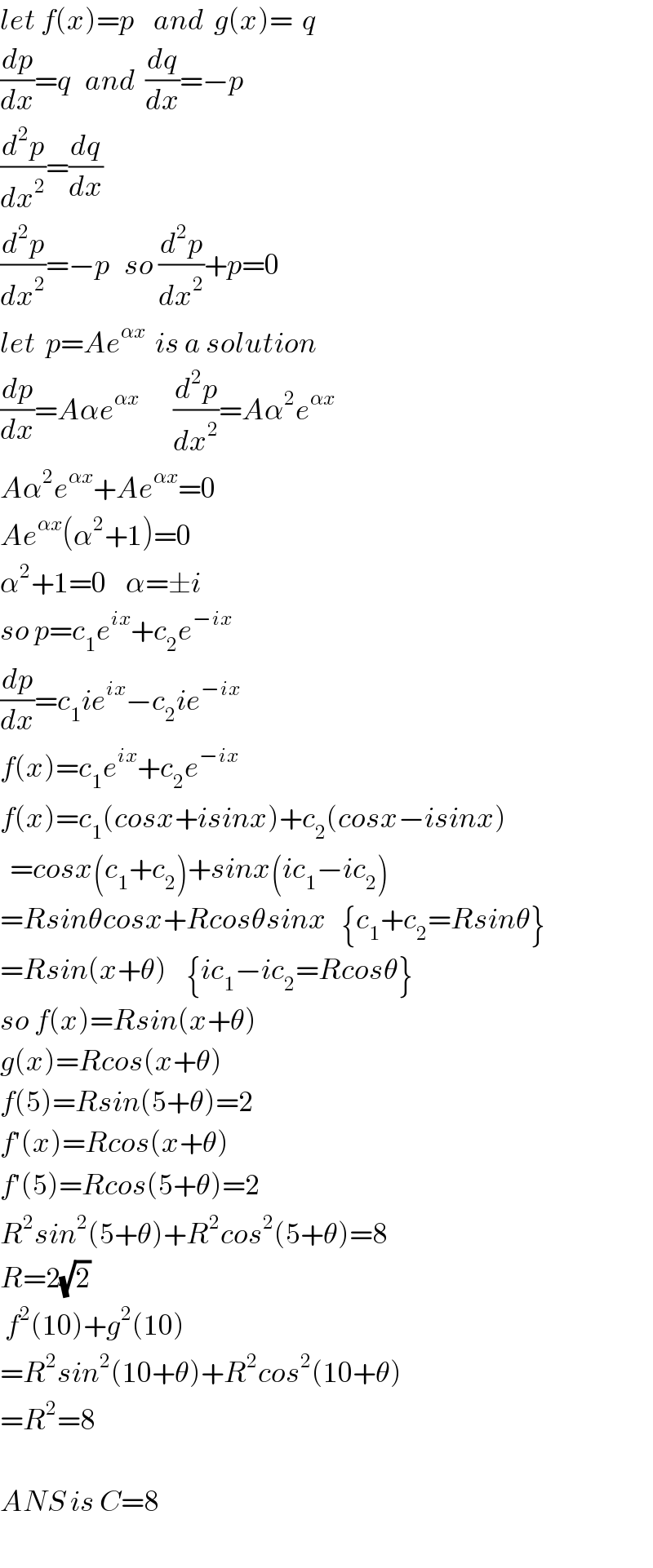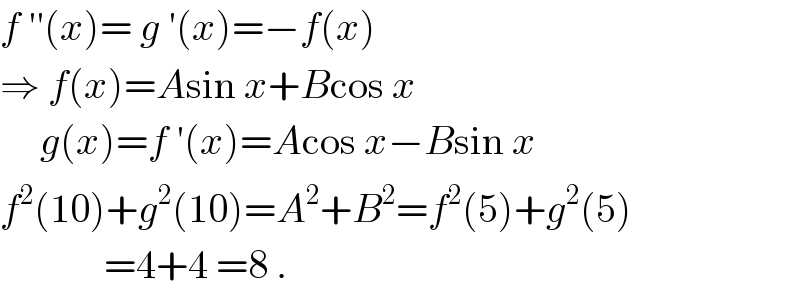
Question and Answers Forum
Question Number 40052 by LXZ last updated on 15/Jul/18

Answered by tanmay.chaudhury50@gmail.com last updated on 15/Jul/18

Commented by LXZ last updated on 15/Jul/18

Answered by ajfour last updated on 16/Jul/18

| ||
Question and Answers Forum | ||
Question Number 40052 by LXZ last updated on 15/Jul/18 | ||
 | ||
Answered by tanmay.chaudhury50@gmail.com last updated on 15/Jul/18 | ||
 | ||
| ||
Commented by LXZ last updated on 15/Jul/18 | ||
 | ||
Answered by ajfour last updated on 16/Jul/18 | ||
 | ||
| ||